
The W-Trek is a popular multi-day hiking trail located in Torres del Paine National Park in Patagonia, Chile, located at the Southern tip of South America. It is known for its stunning scenery, including rugged mountains, glaciers, lakes, and forests. The W-Trek has two main accommodation options: fully supported and self-supported. Your Patagonia packing list for the W-Trek will largely depend on which of these two options you choose.
The main difference between fully supported and self-supported options for the W-Trek is the level of services and amenities provided. Fully supported options offer more convenience and comfort, with accommodation in refugios or huts, meals, and other services provided by a tour operator or trekking company. It’s also possible to do a self-guided option that still includes full room and board, which is a very popular in between option.
Self-supported options require hikers to carry their own packing system, camping gear and food, set up their own campsites, and manage their own logistics, offering more independence and flexibility but also requiring more preparation and effort.
The choice between fully supported and self-supported options for the W-Trek depends on individual preferences, budget, and hiking experience. Obviously, your Torres del Paine packing list for the W-Trek will differ depending on which option you choose.
Below I’ve outlined a Patagonia W-trek packing list for both supported and self-supported options so you can plan what to pack for Patagonia.
Read more about my experience on the W-Trek!
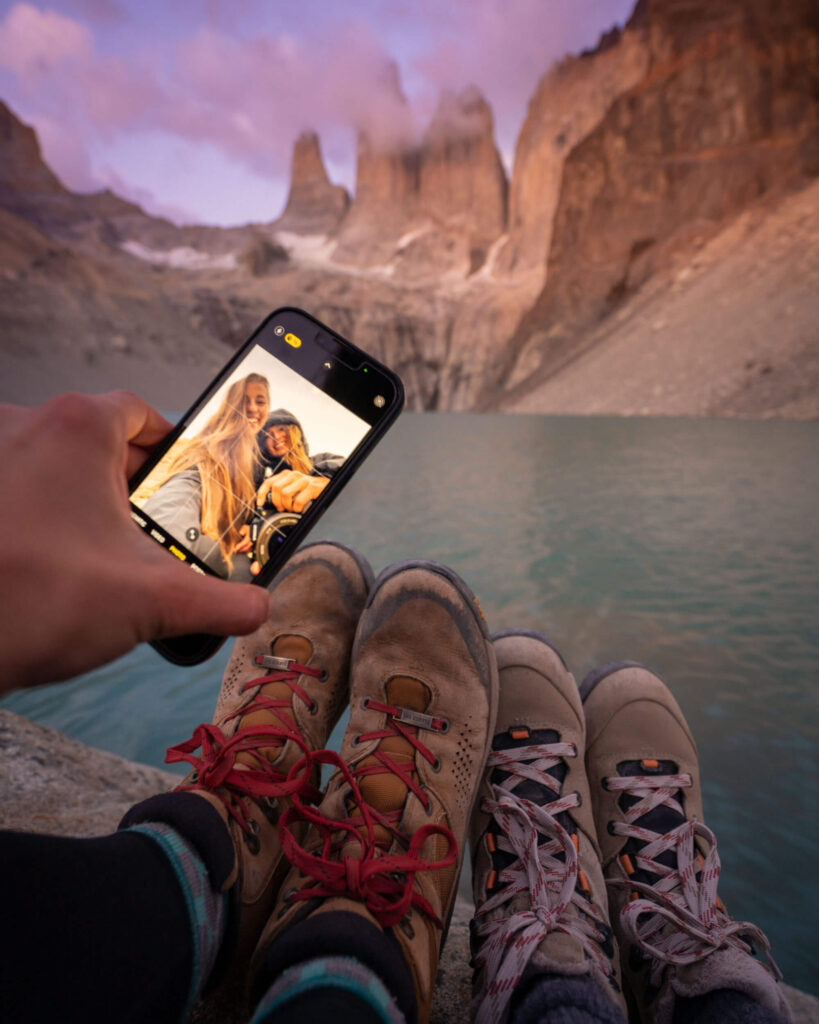
Fully Supported Patagonia Packing List For The W-Trek In Torres del Paine
- Day Pack
- Hiking Boots
- Baselayer Shirt
- Leggings/Pants
- Insulated Jacket
- Rain Jacket
- Socks
- Gloves
- Hat
- Water Filter
- Travel Duffel Bag
- Ten Essentials
Self Supported Patagonia Packing List For The W-Trek In Torres Del Paine
- Everything from the “Fully Supported List” (minus daypack)
- Backpack
- Tent
- Sleeping Bag
- Sleeping Pad
- Stove
Patagonia W-Trek Packing List for A Fully Supported W-Trek
Bringing the right gear is extra important when you’re traveling; there’s no pulling a U-turn and driving back home to grab something you forgot. Here’s a packing list for Torres del Paine W-Trek full of my favorite gear, plus some great alternatives if you have different needs.
I like to plan in two sections: what you’ll need for a fully-supported trip including the usual travel essentials, and then everything else you’ll need for a self-supported trip.
Remember to get what fits you. I love my pack and boots, but if they don’t feel right for you, there’s other awesome gear out there. Don’t be afraid to cut your own path when you do your gear check.. Maybe trail running shoes work better for you than hiking boots. Make sure that your kit works for you!
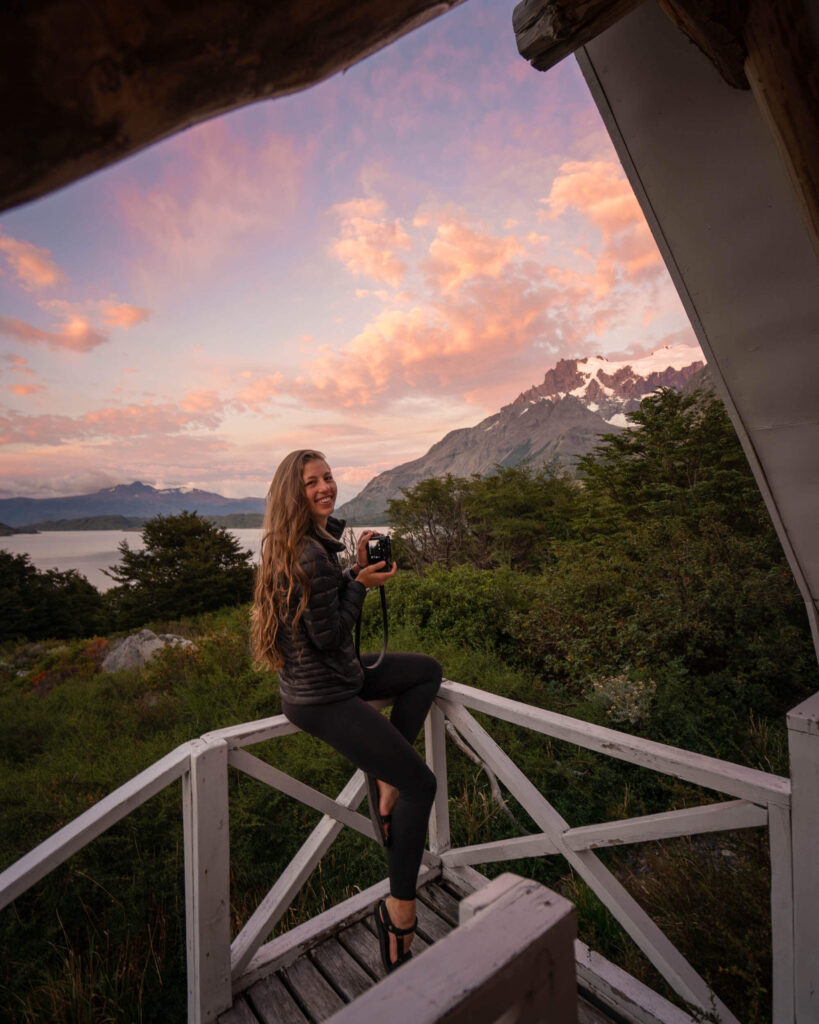
Day Pack
Osprey Tempest 34: The Tempest is a great, lightweight day pack with a little extra capacity for use on the W-trek hike. It comes in size options up to 40 liters, but the 34 liter is most commonly available.
Extra support: Osprey Sirrus 36 (additional size options)
Day-plus: Osprey Eja 38 (slimmed down version of my favorite backpack)
Great value: Gregory Maya 30L womens (budget friendly)
Hiking Boots
Danner Mountain 600 full grain leather hiking boot: Waterproof hiking boots? Check. Grippy Vibram outsole? Check. Looks great, clean or dirty? Check. These fit me perfectly and are my personal preference, but everyone’s feet are different.
Great Value: Keen Terradora Mid WP (waterproof and breathable). This is my other go-to hiking boot. I love it for times that I want something a little lighter weight. Best for narrower feet.
Base layer long sleeve shirt
Smartwool classic all-season long sleeve merino baselayer: Merino wool regulates temperature, wicks moisture, and even resists odors. This lightweight, long-sleeved shirt version is perfect for your W-trek packing list; it’s a great layering piece for unpredictable weather when you need an extra layer.
Extra warm: Patagonia Capilene Air Crew Top (another good option and so comfy)
Vegan: Outdoor Research Echo Hoodie (lightweight and breathable)
Great Value: Terramar Cloud Nine Crew Top (good stretch)
Base layer short sleeve shirt
In cooler weather, long-sleeved shirts fit the bill for daily use if you need warmer layers. If it’s hot (and our W-trek got hot) these are great options: Lululemon Align Tank Top, and Patagonia Capilene Cool Lightweight Short Sleeve.
Leggings/Pants
I’ve always preferred hiking in leggings with soft fabrics, great breathability, and
pockets! There are tons of great options from brands like Vuori, Lululemon, and Athleta.
If you prefer pants, the Fjallraven Abisko Midsummer Zip Off Trousers are great for hiking or travel.
Insulated Jacket
Rab Microlight Jacket: Down is still the best insulator out there, and Rab’s Microlight is a great combination of serious warmth and light weight. Rab’s lifetime warranty ensures it’s part of your kit for years to come. I run cold, so a down jacket is essential for me; evenings on the W-trek can get cold and there are often strong winds too!
Ultralight: Mountain Hardware Ghost Whisperer 2 Hooded Down (7.8 oz!)
Vegan: Patagonia Micro Puff Hoody (synthetic fill, still warm)
Say yes to the vest: Patagonia Down Sweater Vest (core warmth in a small package)
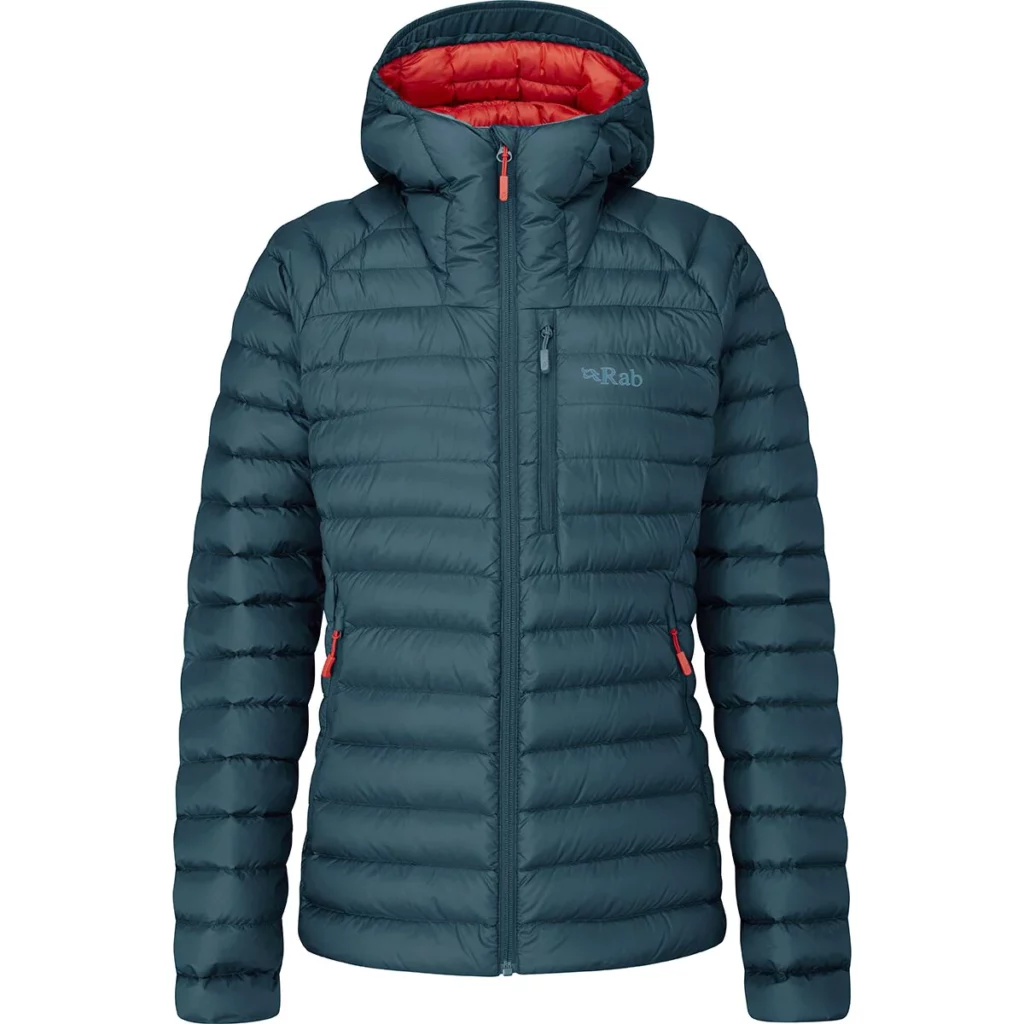

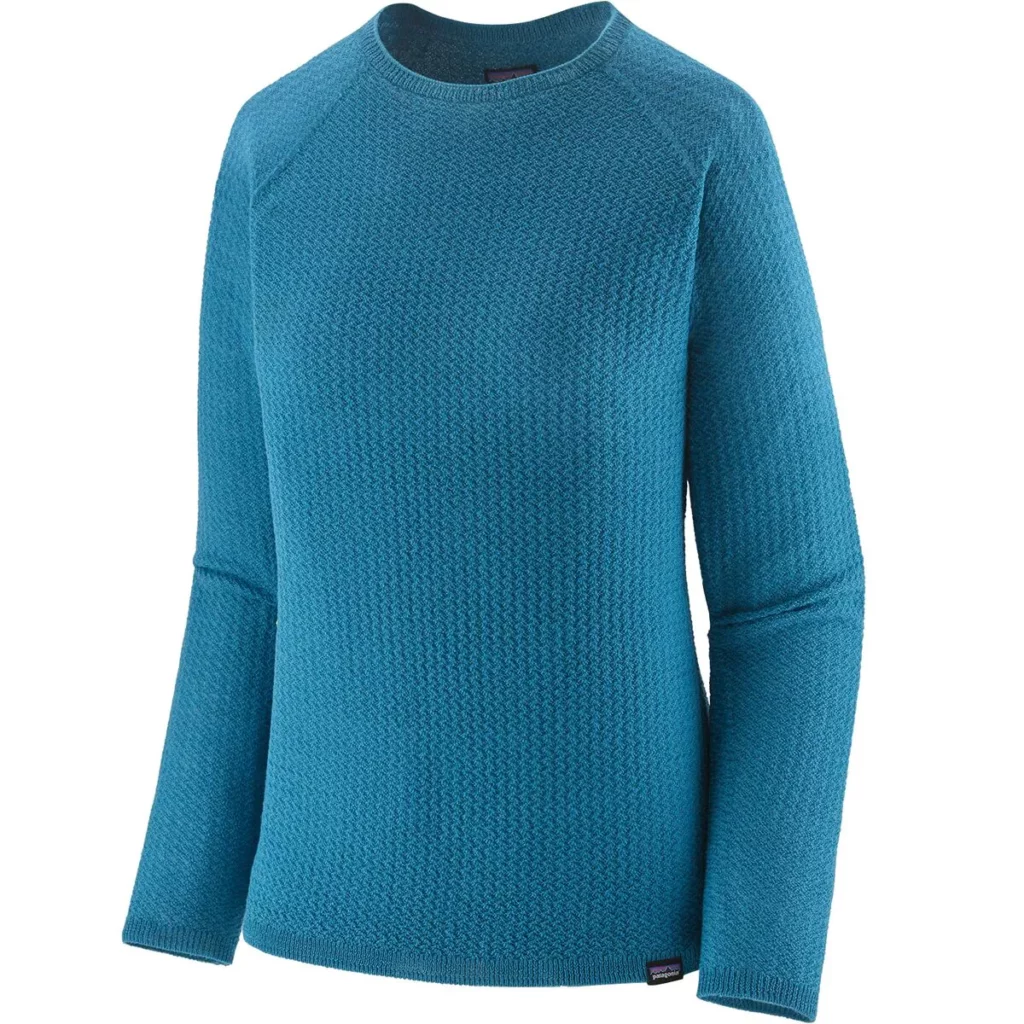
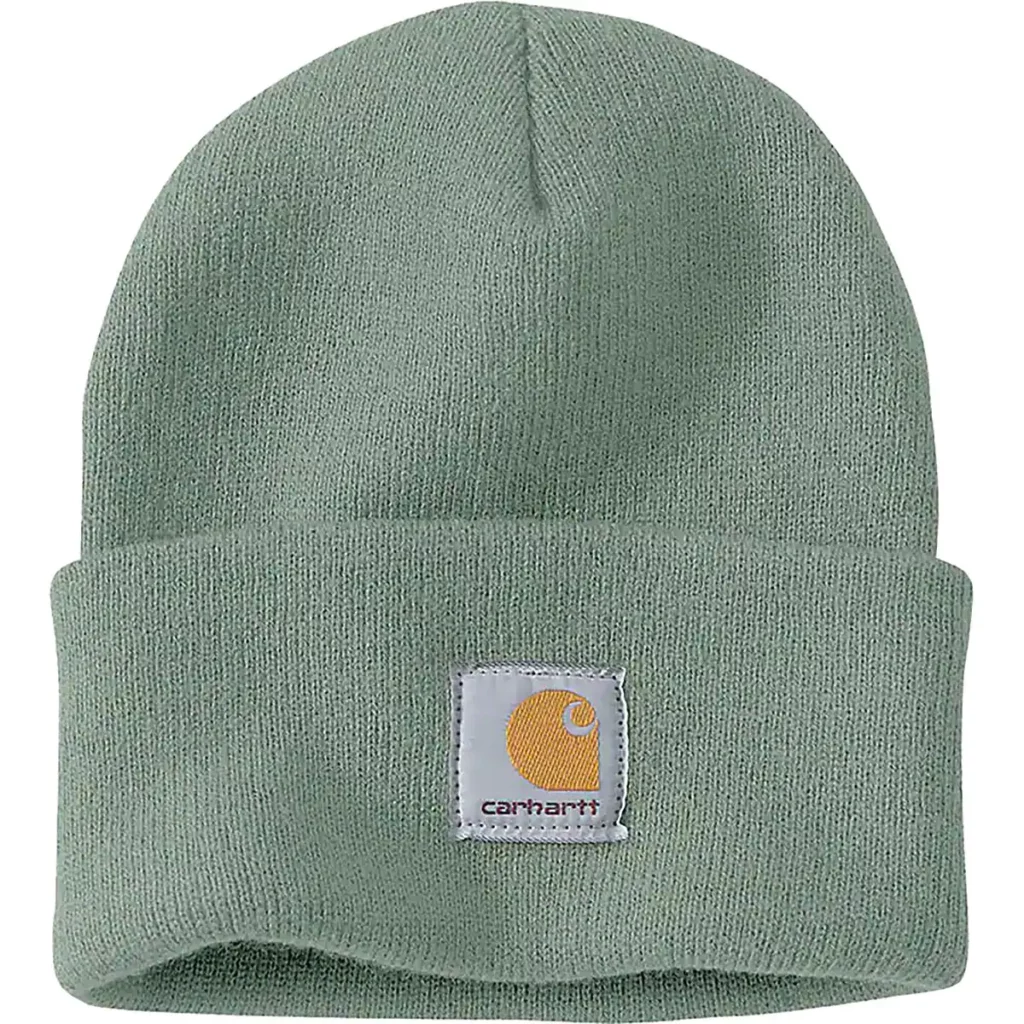
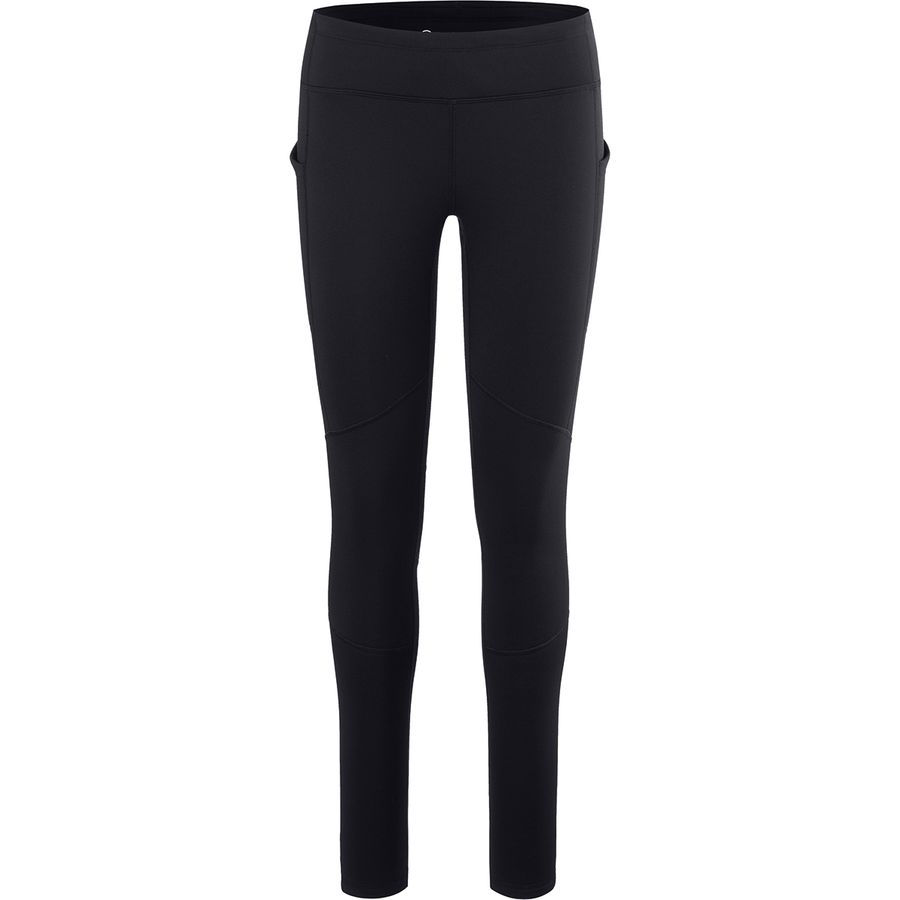
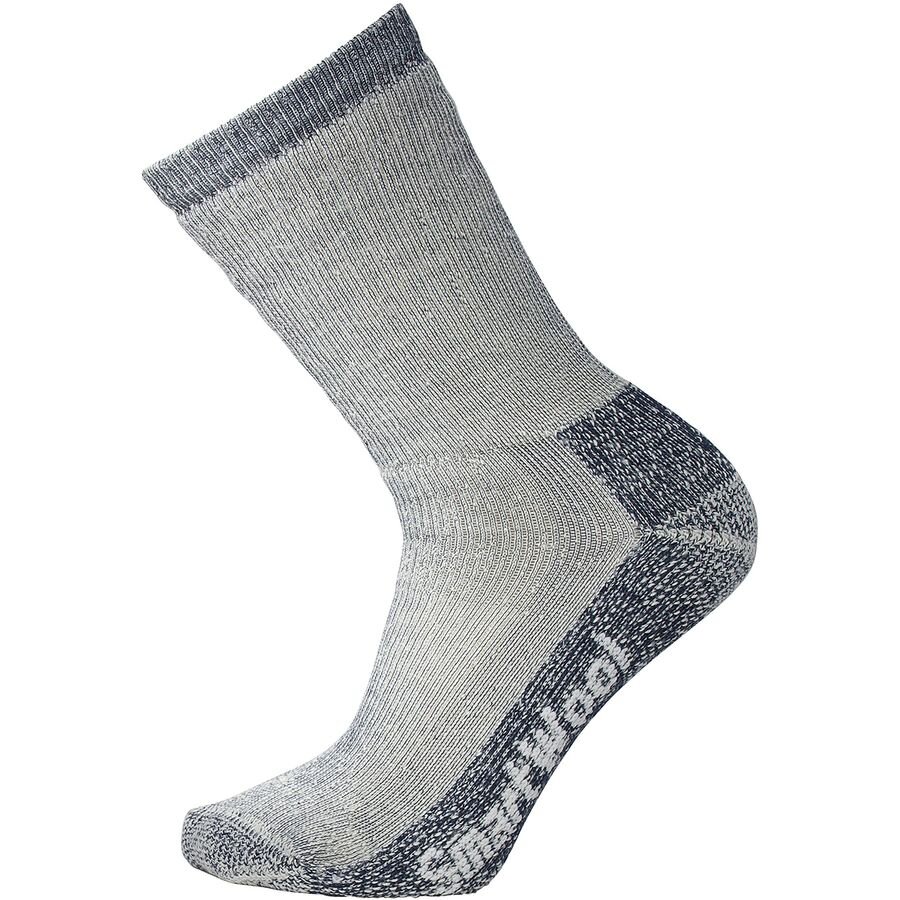
Rain Jacket
Rab Kinetic 2.0: My ride-or-die waterproof jacket. The soft-shell type material breathes wonderfully while keeping me dry, unlike so many rain shells that will keep you dry but leave you soaked in sweat while hiking. Expect rainy days on the W-trek!
Ultralight: Outdoor research Helium (5.6 oz!)
Bomber: Patagonia Calcite (Gore-tex Paclite waterproofing).
Great Value: Marmot Precip Eco (still 2.5 layer).
Socks
Merino wool hiking socks are hard to beat, and several companies make great lightweight,
cushioned hiking socks with solid warranties. These socks can often handle multiple days of use on a multi-day trek, saving precious packing space. My favorite brands include Darn Tough, Smartwool, and Icebreaker.
If you prefer a vegan or synthetic option, check out Injinji Trail series toe socks.
Gloves And Hat
Marmot Powerstretch Connect Gloves: Breathable, warm, lightweight, and touchscreen compatible – these gloves check all the boxes.
Carhartt Beanie is a great lightweight but warm hat with lots of fun colors.
Windproof: Smartwool Merino Sport Wind Training Gloves (still breathable!)
Waterproof: Mountain Hardware WindLab Gore-tex Infinium Stretch Glove (versatile)
Great Value: Outdoor Research Trail Mix Glove (touchscreen)
Water Filter
BeFree Water Filtration System: I love this squeeze-style water filter on the trail. It’s tiny, filters quickly, and I can move away from a water source while filtering (bye mosquitos!).
If you want to filter in larger batches, CNOC’s Vecto 2L 28mm thread water bags are also an upgrade in durability. A 32 oz Nalgene Bottle is a great reusable water bottle for backpacking and travel.
For Groups: Platypus Gravityworks 2.0L Filter System (no pumping or squeezing)
Travel: Grayl UltraPress (filters viruses, no more single-use bottles!)
Emergencies: MSR Aquatabs purification tablets (always in my bag!)
Travel Duffel Bag
Patagonia Black Hole 70: A classic bag that’s built to be beat up. It’s water resistant, has detachable backpack straps, and comes in a ton of sizes and colors.
Wheels: Patagonia Black Hole 70L wheeled duffel
Great Value: Rab Kitbag 50L duffel
Self-supported Patagonia Packing List For The W-Trek
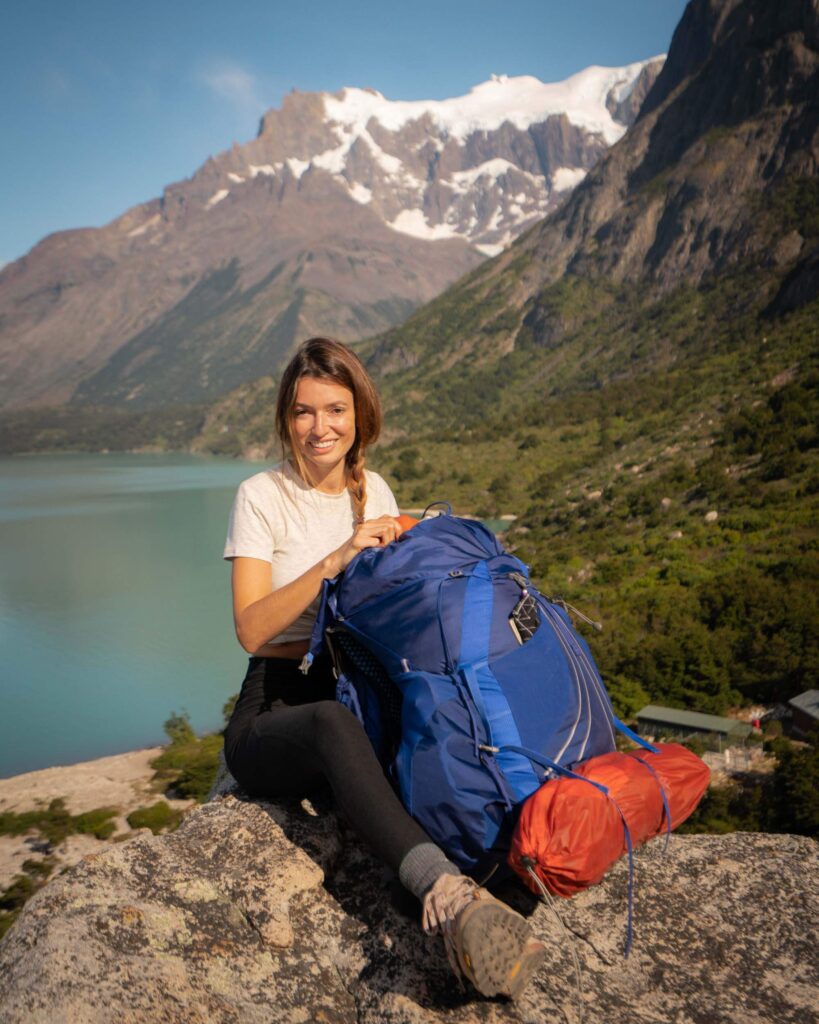
Backpack
Osprey Exos 48: A lightweight backpack that still does an amazing job of distributing weight (check out the Eja, the women’s specific version). The back panel breathes wonderfully, and Osprey updated how
the backpack’s fitting adjusts. As lightweight packs, the Exos and Eja perform best carrying less
than 40 pounds – considering weight is essential when you’re carrying your own pack on the self-supported option.
For heavy loads: Mystery Ranch Bridger 65L Womens (durable and burly)
Rain fly included: Granite Gear Peremiter 50L Womens (only 3lb 2oz)
Great Value: Osprey Renn 65L (wide fit range)
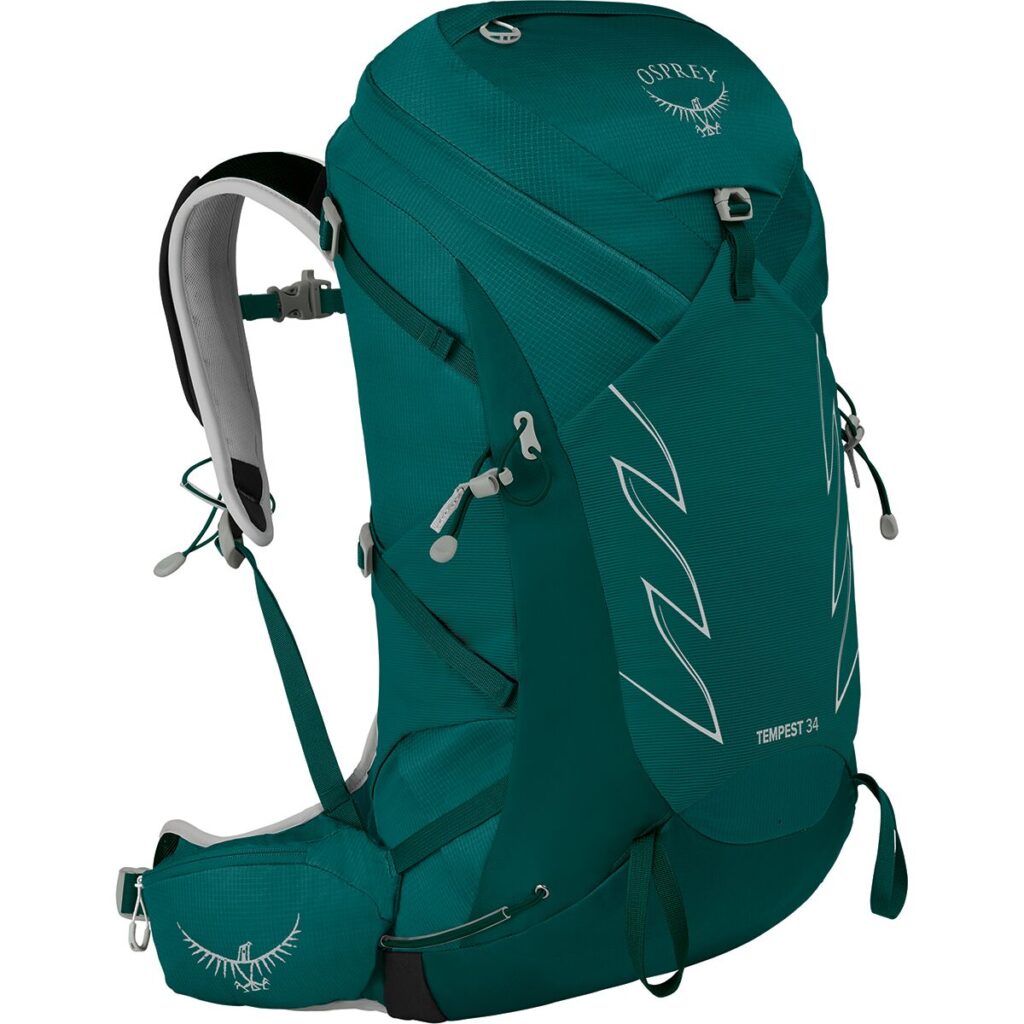

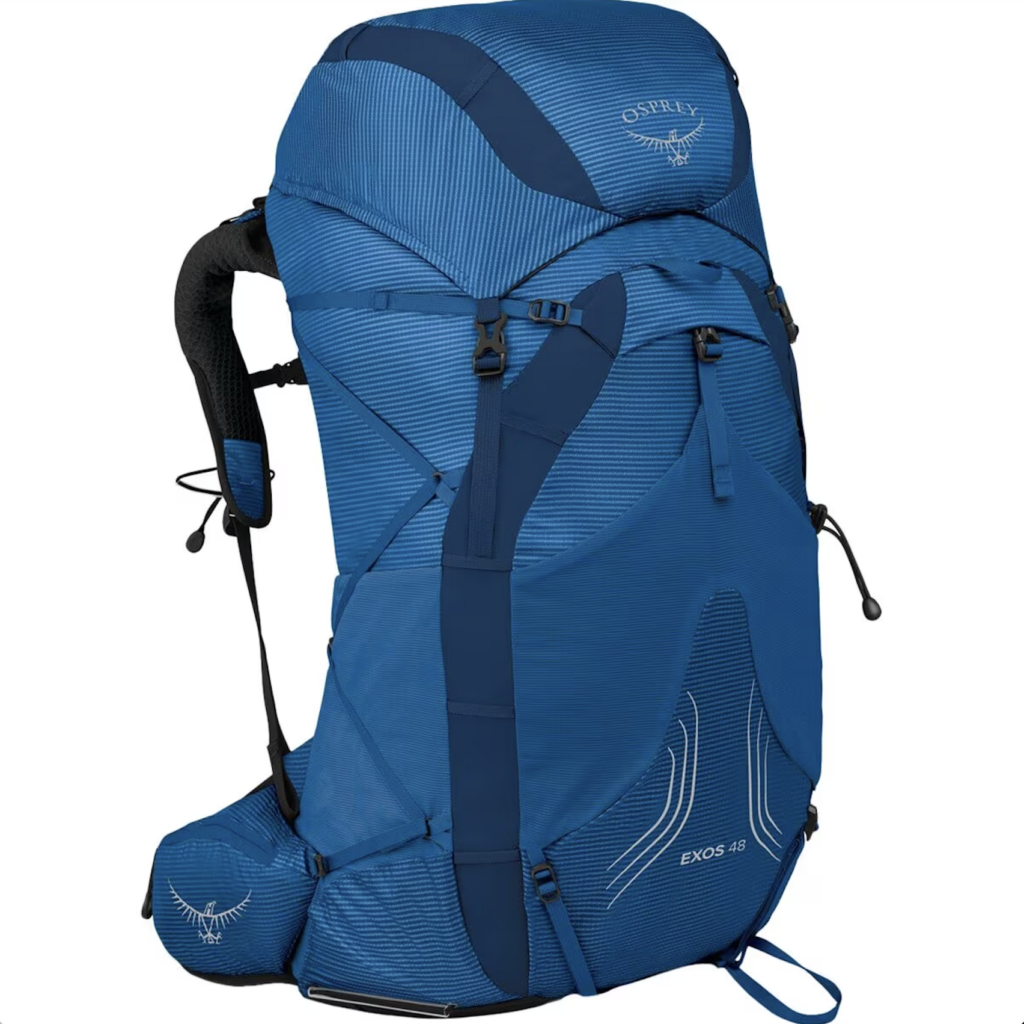
Tent
Big Agnes Copper Spur HV UL2: The Copper Spur has been my go-to tent for years, and it was a great W-trek camping gear alternative to refugios. I love it as a roomy single person tent; if you’re using it for two, be ready to get cozy.
Ultralight: Durston X-mid 1P (not freestanding, but still has mesh inner)
Extra roomy: MSR Hubba Hubba 3 (unique pole material, light for 3P)
Great Value: Mountainsmith Bearcreek 2 (durable, OK weight)
Sleeping bag
Western Mountaineering Ultralite 20 degree: I run ice-cold while sleeping, so I’m willing to splurge on sleeping bags. Western Mountaineering bags are expensive, but their made-in-the-USA-quality is truly top notch. Their down’s weight to warmth ratio is amazing and temperature ratings are often warmer than advertised.
Great Value: Marmot Trestles 15 (also vegan!)
Ultralight: Rab Neutrino 600 (great quality construction)
Side sleepers: Nemo Disco 15 (extra room at elbows and knees)
Sleeping Pad
Nemo Tensor Insulated Light Sleeping Pad: Did I mention I sleep cold? This pad insulates against cold ground incredibly well for its small size and weight, and it’s legitimately comfy to sleep on. It’s worth investing in a good ground pad; no one wants a middle-of-the-night deflation, especially when traveling.
Extra plush: Thermarest TrailPro (foam + air combo)
Only foam: Exped Flexmat (old school, but no air leaks, ever!)
Stove
MSR Pocket Rocket Deluxe: A great upgrade from the Pocket Rocket 2, this stove has a recessed burner head to minimize wind and a pressure regulator for better cold weather performance and saving fuel – perfect for your self-supported W-trek camping gear.
MSR’s TrailLite 1.3L Pot or Sea to Summit’s Alpha Pot are great options for a companion pot or pan.
Don’t forget utensils!
Best system: JetBoil Flash (no hassle, fast boil)
Cold weather: MSR Dragonfly (liquid gas, fussy but burns well cold)
Great Value: JetBoil Zip (system for under $100)
Pro Tip:
You can’t fly with isobutane, so fuel up for the W-trek at Puerto Natales.
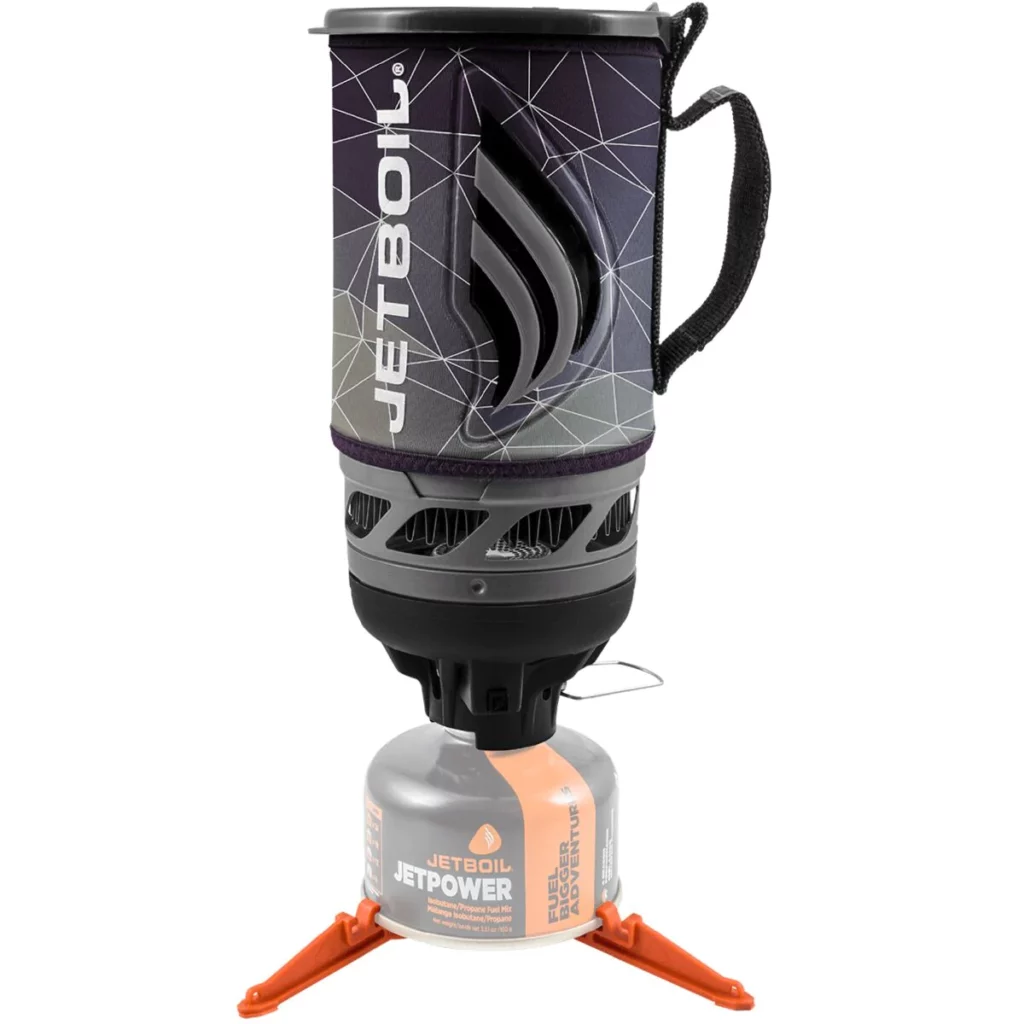
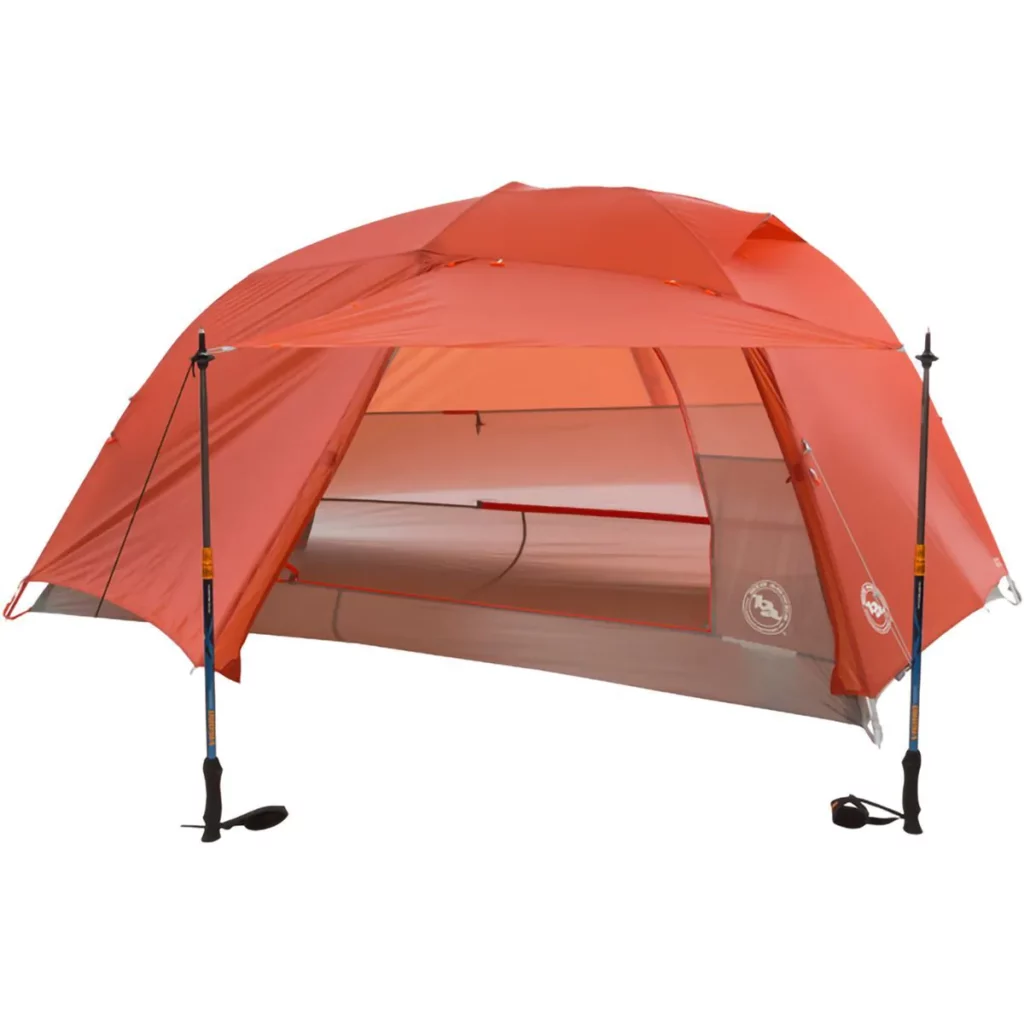
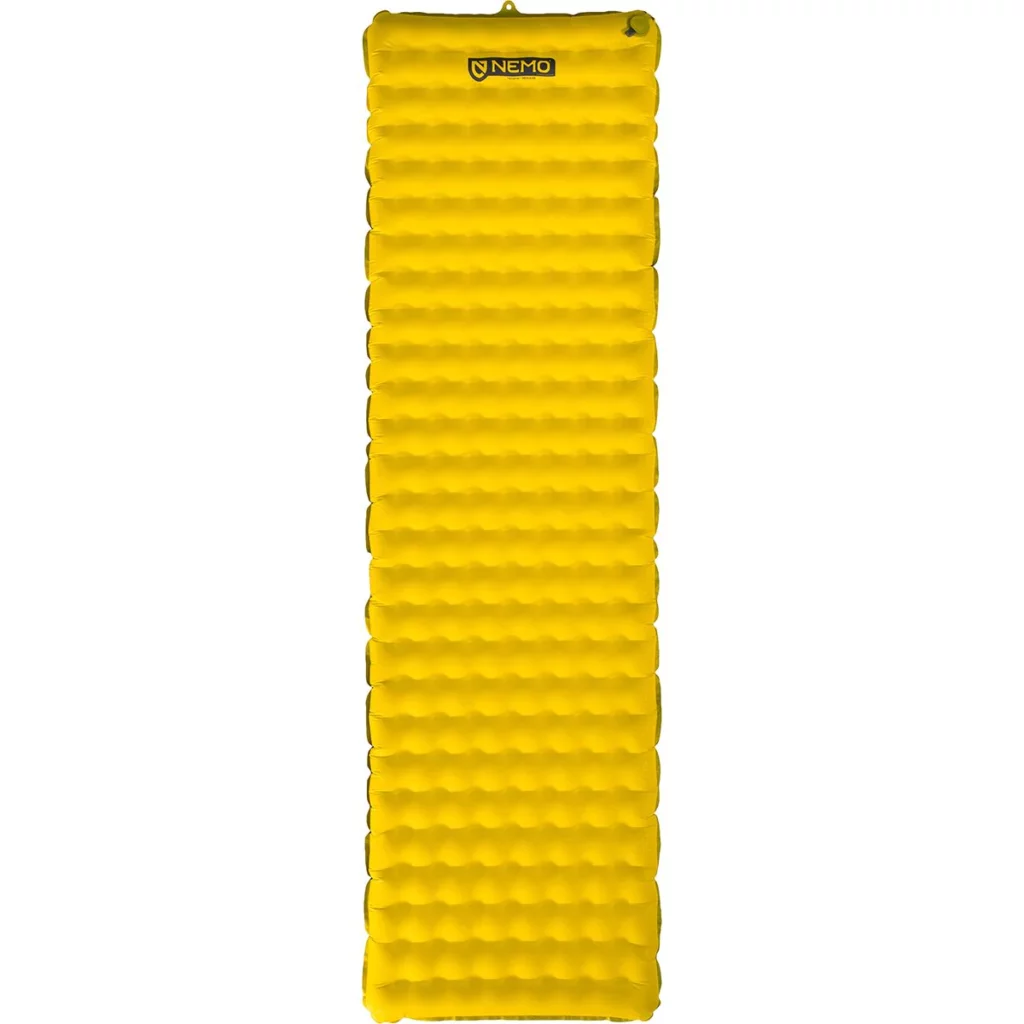
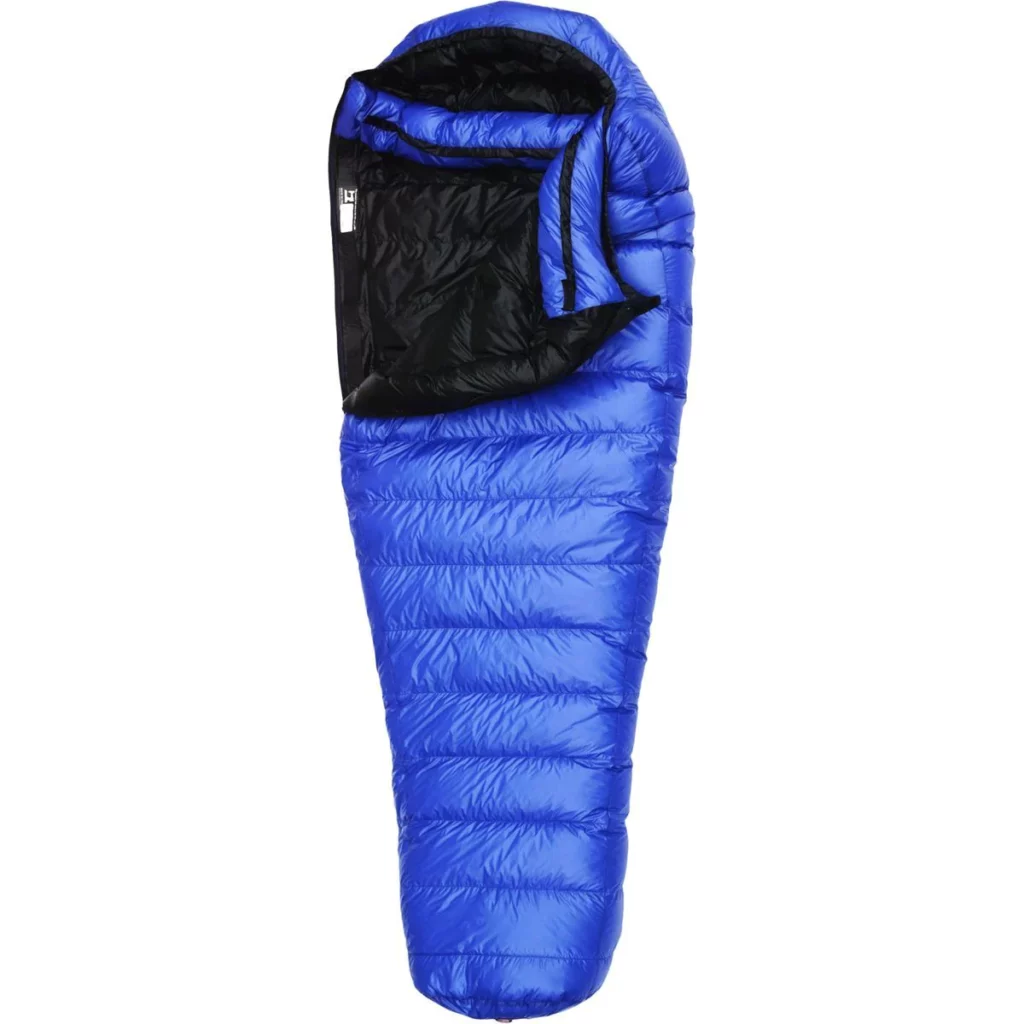
Small items, big impact
Real-time mapping isn’t essential for the W-trek hike, but it’s a good idea. Gaia’s GPS App is a great
smartphone mapping app; download maps for offline use.
Garmin’s Inreach Mini requires a subscription but includes messaging and SOS communication, and Garmin’s latest update improved battery life.
Headlamp: I love having a headlamp with the ability to charge via micro USB or run on AAA batteries. The Petzel Actik Core or Black Diamond Revolt are both great options.
Sunglasses: It took me a while to come around to premium sunglasses, and RAEN got me there. GoodR has great budget-friendly options and fun colors.
Outdoor Research’s Swift Cap is super breathable if you prefer a sun hat. Look for sunscreen with reef-friendly formulas.
First Aid Kit: Adventure medical has you covered with several first aid kits. Their Ultralight kit is perfect for the W-trek.
Something like a SOL Heatsheets Survival Blanket could be a lifesaver in an emergency.
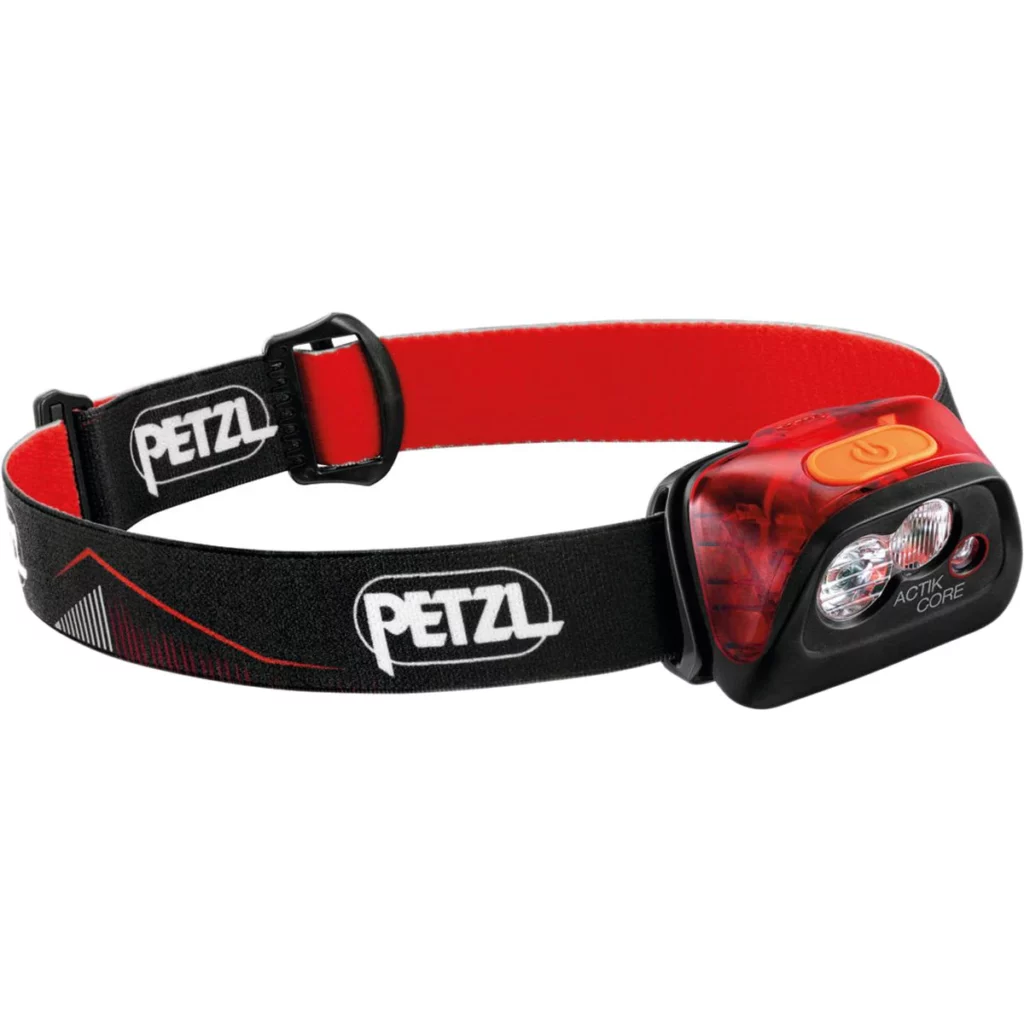
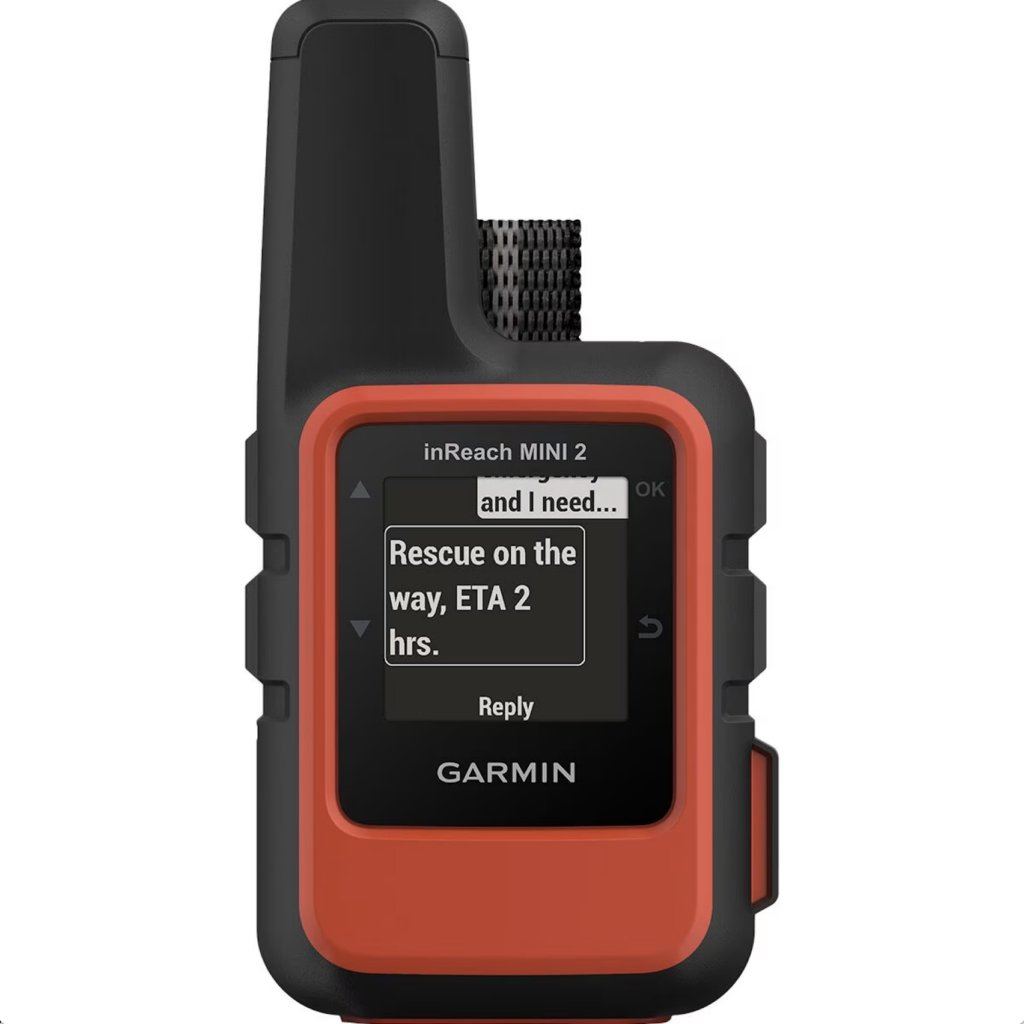
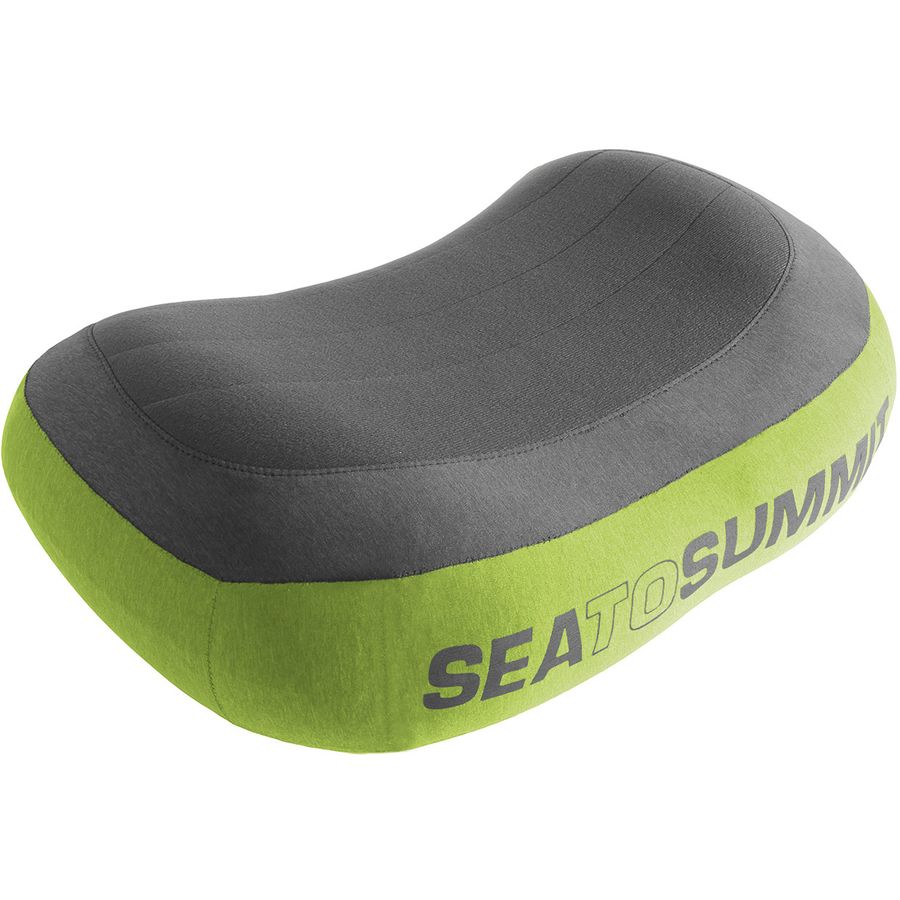
Fire: Always have a fire starter in case of emergencies. A gas station lighter or waterproof matches
will do. If you aren’t comfortable starting a fire in wet conditions, check out options like SOL Fire
Lite fuel cubes.
Multitool: A lightweight knife like Petzl’s Spatha Knife is a nice complement.
Snacks: My favorite trail snacks are 1) candy, 2) candy, and 3) candy! Honey Stinger makes some healthier but still tasty snacks like their Organic Energy Chews. Either way, savory or sweet, you likely won’t be able to find your favorites in Patagonia, so I’d recommend bringing some from home!
For a full meal, I turn to Peak Refuel – one of the few dried food brands I like. Don’t forget about W-trek campground stores for delicacies like ramen noodles.
Pillow: Some people use balled-up clothing as a pillow. I love the Summit Aeros Premium Pillow; it has a slight curvature to cradle your head, and inflates to your preferred size and firmness. For an ultralight pillow, Therm-a-Rest’s Airhead Lite weighs only two ounces.
Hiking Polls: Some people love trekking poles, some people hate them. My knees love them (especially for a self-supported W-trek), and I prefer collapsable poles. Black Diamond’s Trail Sport is a great
budget option, but the lightweight Black Diamond Distance Carbon FLZ breaks down smaller for
travel packing.
I hope this Patagonia packing guide and gear lists help you feel more prepared for your trip, doing the W Trek is incredible and having the right gear will ensure your Patagonia adventure is even more enjoyable.
Just a quick heads up! Some of the links on this blog may be affiliate links, which means that if you click on them and make a purchase, I may earn a commission. Don’t worry, though – it won’t cost you anything extra, and it’s a way for me to keep this blog up and running. Thanks for your support!
Looking For More Hiking Inspiration?
The Ultimate Guide For Beginner Backpackers
The 10 Essentials To Keep You Alive In The Outdoors
10 Must Do Hikes In Washington
The Kalalau Trail – To The Beach And Back
Like this post? Pin it for later and share it with others!
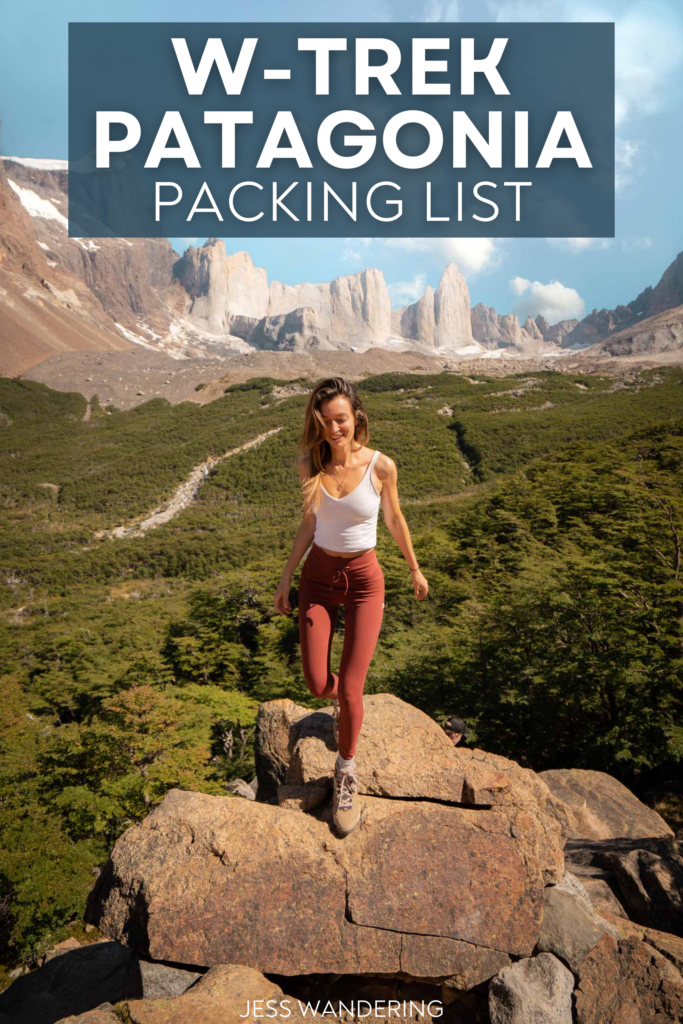

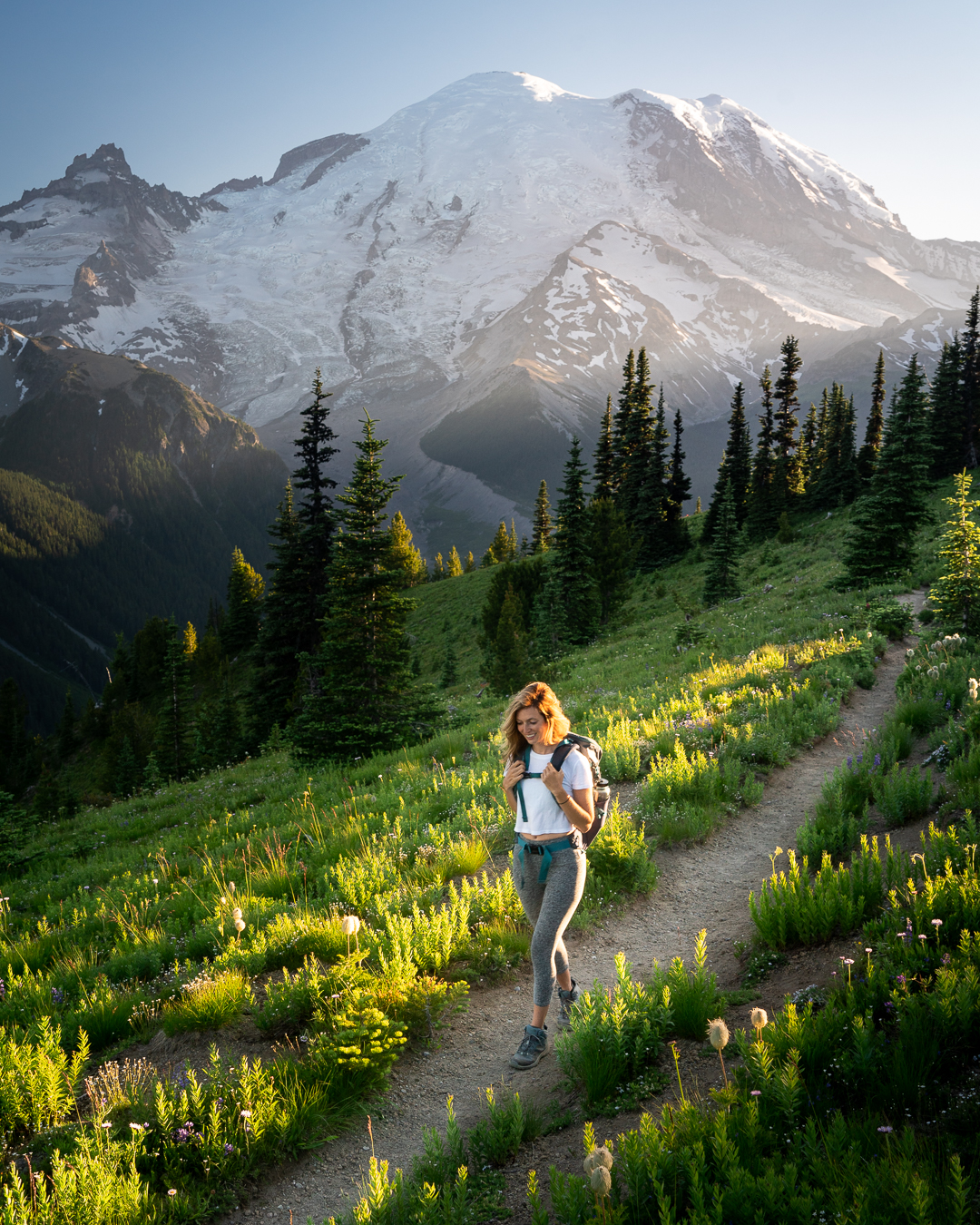
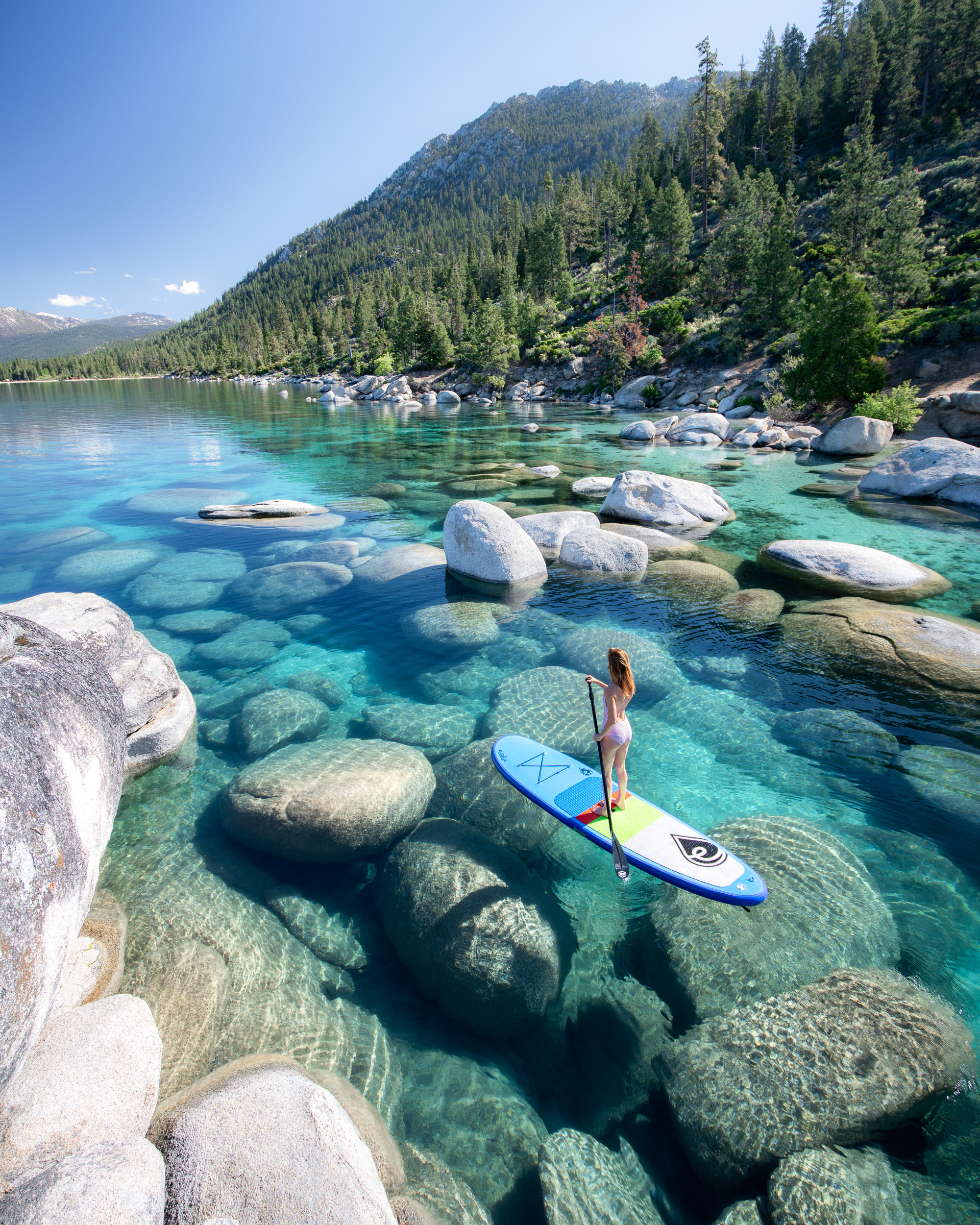
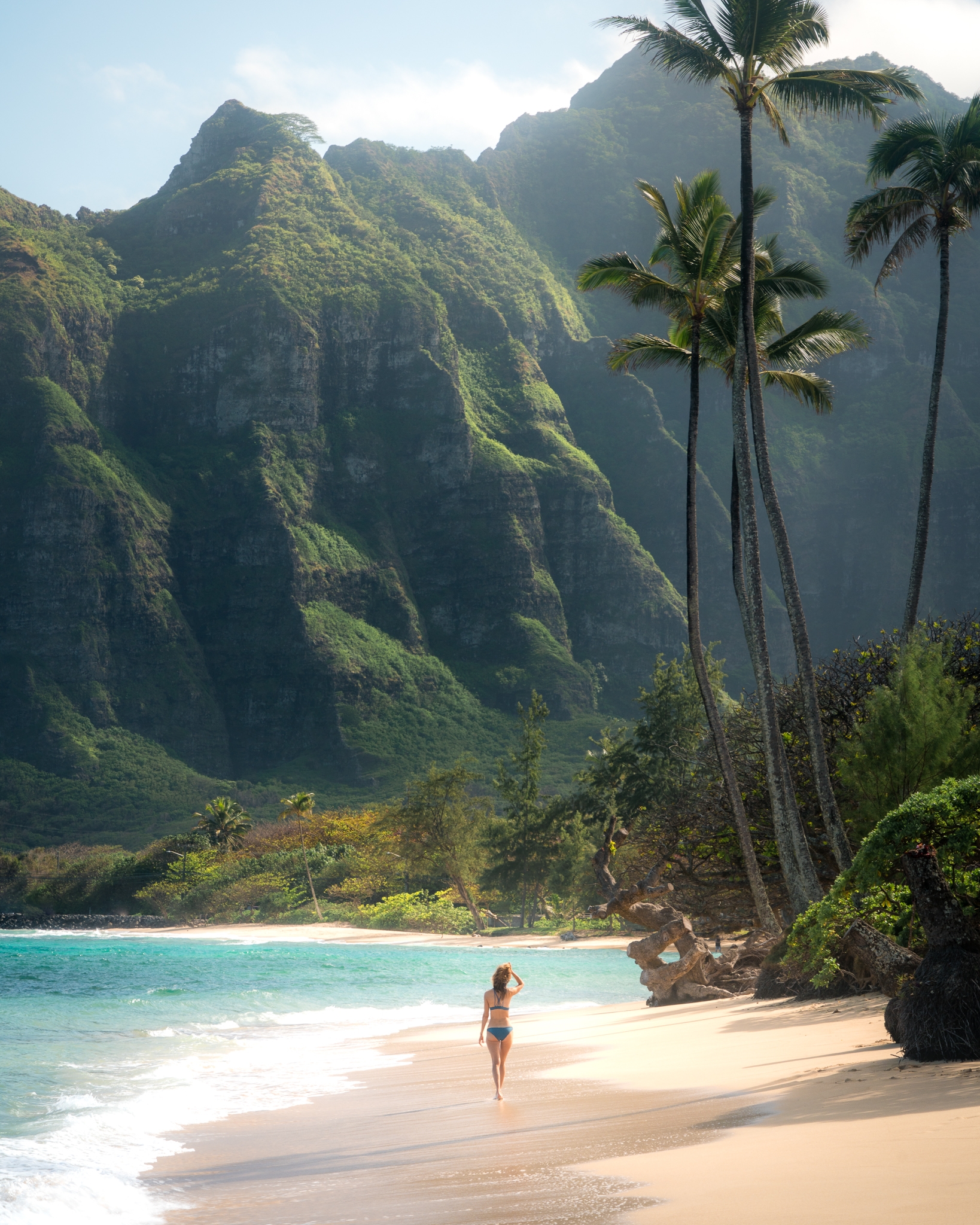
Hi Jess,
Thank you for sharing your packing list for the W-trek. I’m also a photographer and plan to bring my camera gear but don’t want to add much weight. Would love to learn which camera, lenses and, potentially, tripod that you brought for your trip? Thank you!
Hi Gina, I brought my 16-35 which I was happy to have at the towers. It was a much wider shot than I expected. My friend Andrea had her 24-17mm so we used that for more cropped in photos. But in general the views were fairly close range, so I would suggest a zoom lens with a decent amount of variation in focal length.